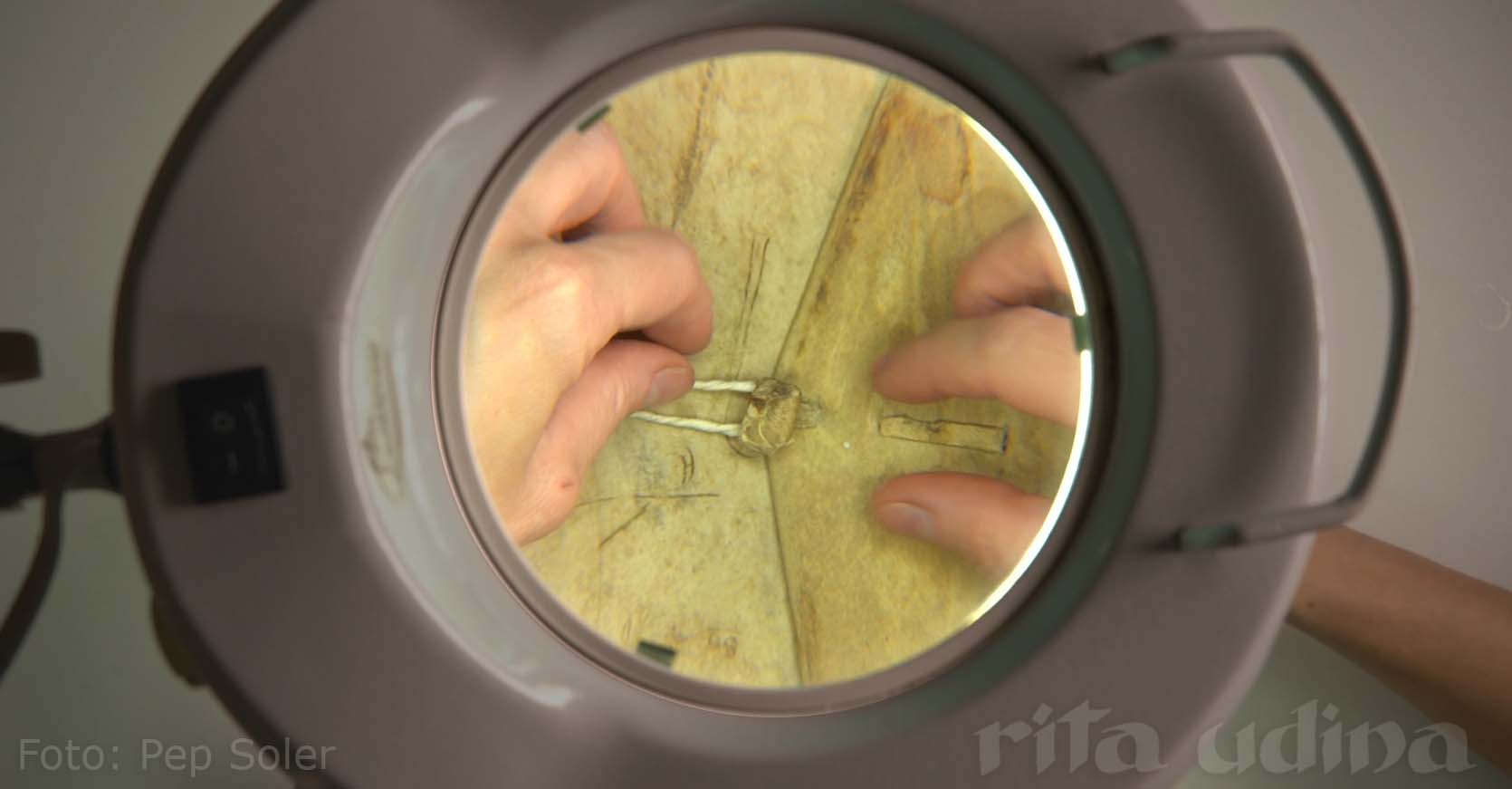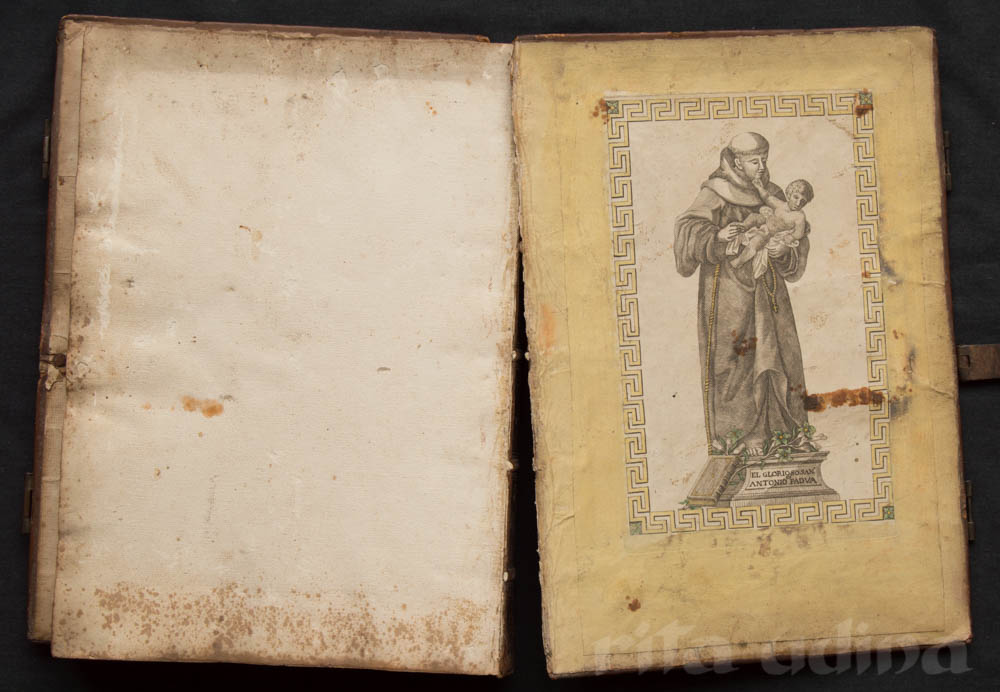CoAC
Find below the blog posts related to CoAC:
Profession: book and paper conservator
What does a paper conservator do? Whom does she work for? What skills and knowledge does she ought to have? Preservation and conservation, a field linked to science, history and arts and crafts. A video explains what differenciates us from forgers and shows -among other- how we produce a hand-made suction table to restore paper artifacts, with loads of creativity, a feature most necessary to become book and paper conservator.
Unlocking St. Anthony’s locked manuscript
"Tony, Tony, come around, something’s lost and can’t be found!" Some manuscripts require more than just manual skills to succeed in their conservation, and so we prayed to Saint Anthony to help us unlocking the bookbinding, whose key had been lost forever. Certainly not many renaissance bookbindings have an iron safety lock in their covers and thus this extra holly help was deemed quite necessary. The prayer didn't provide any key, but at least a satisfactory conservation solution was achieved!
New conservation methodolgy to retrieve lost flexibility to brittle tracing paper
Approach to a new methodolgy to retrieve the lost flexibility to brittle paper. Tracing paper -so usual among technical drawings- have in common their transparency, but there are significant differences in the process to make them. The properties and behavior will be very different then. Impregnated papers, for an instance, were applied oils or varnishes to provide them translucency. Explanation restoration of several drawings in which the varnish was removed to replace it later.
Silver-gelatine photographs conservation
New Elimination Procedure for Silver Mirroring. Silver mirroring is a type of deterioration that appears in most gelatin developing-out paper (DOP) historical photographs and black-and-white films. Its treatment involves so many problems that it has often been ruled out. In this article we present a new and simple elimination procedure, which is efficient and offers stable results in the long term. The study of the causes of the formation of silver mirroring sheds light on aspects that had been little explained so far: the fact that this type of deterioration always appears on the surface of the image leads us to consider a mechanism of transport of electrical charges.
Touch and “my crumpled ADLAN tracing papers”
How we restorers motivate with crumpled tracing papers, beautiful papers... This restorer is thrilled with "crumpled ADLAN tracing papers" from CoAC archive, which went through my hands some years ago, and invites you to participate in its digitization.
Glass plate conservation (I)
Glass plate photograph conservation (I) Types of damages (silver mirroring, tapes, fingerprints), and how to properly store photogrpahs in four flap envelopes.
Categories
ARTEFACT
archive or library
book
book structures
bundle
headband
hollow back
limp-vellum binding
locks
sewing
tight back
document
seal
lacquered seal
printed stamp (see TECHNIQUE)
drawing
manuscript
photograph
albumen
daguerreotype
glass plate
silver gelatine
plans, maps, architectural or technical drawings
maps
plans
poster
DAMAGES
acidity / oxidation
bibliopath - graphopath
Bookbugs (pests & paper eaters)
insects
silverfish
woodworm
microorganisms
mold
disaster
flood
foxing
losses, gaps
pressure sensitive tapes
silver mirroring
structural
wrinkles
MATERIAL
fabric
cotton
silk
velvet
glass
leather
parchment
metal
paper
coated paper (art paper)
Kraft paper
laid paper
rag paper
tracing paper
impregnated paper
onion skin paper
Washi
wood pulp paper
plastic
cellulose acetate
polyethylene terephthalate (PET)
Polypropylene (PP)
wood
PRODUCTS
adhesives
natural
shellac
rubber (natural)
starch paste
synthetic adhesives
Filmoplast®
Paraloid B72
rubber (synthetic)
Tylose® (MHC)
gels
agarose
chemical gel
hydro-gels
Klucel®
organo-gels
physical gels
Velvesil Plus
xanthan gel
nanoparticles
solvent
benzyl alcohol
ciclometicone
diethyl carbonate
dimethyl sulfoxide (DMSO)
polyethylene glycol (PEG)
surfactants
TECHNIQUE
ballpoint pen
collage
felt-tip pen
gouache
graphite (pencil)
ink
print
engraving
etching
lithograph
woodcut
printed stamp
reproduction
diazotype
watercolour
THEORY on cons. & rest.
TOOLS, MACHINES
TREATMENTS
bleaching
light bleaching
cleaning
stain removal
surface cleaning
tape removal
varnish removal
wet cleaning
deacidification
digitization
flattening
flattening under tension
housing (storage)
box
folder
four flaps envelopes
inpainting
mimetic in-painting
neutral colour in-paint
mould treatment
preventive conservation
climate (HR, temp.)
re-binding
reinforcement - consolidation
backing with fabric
Infilling
leafcasting
ink fixing
lining
sizing
tear repair
varnishing















